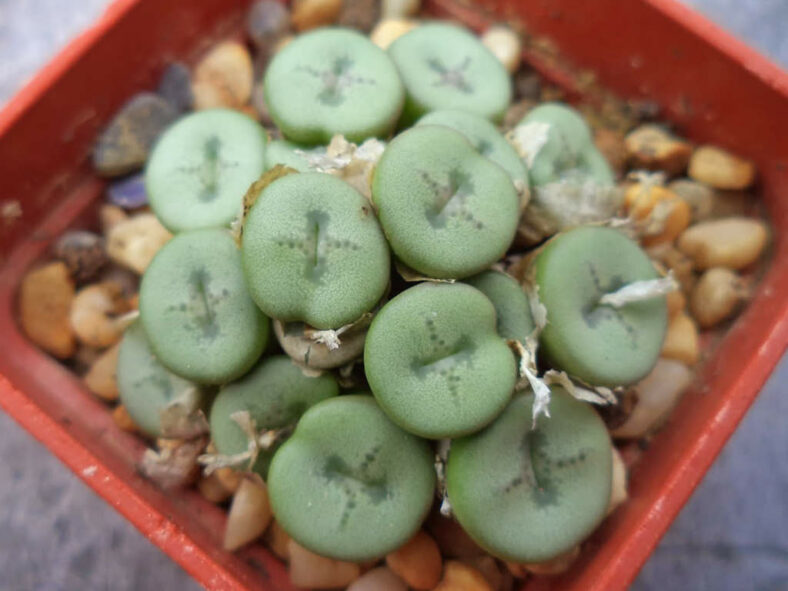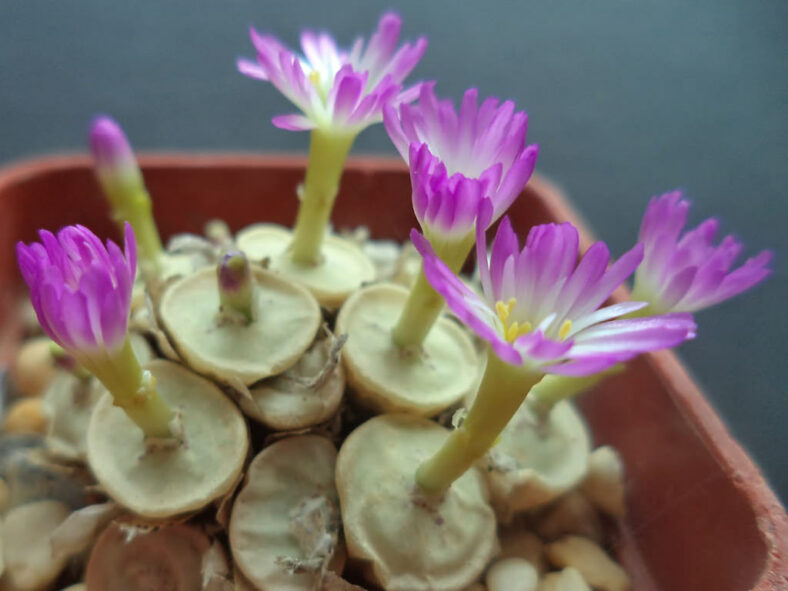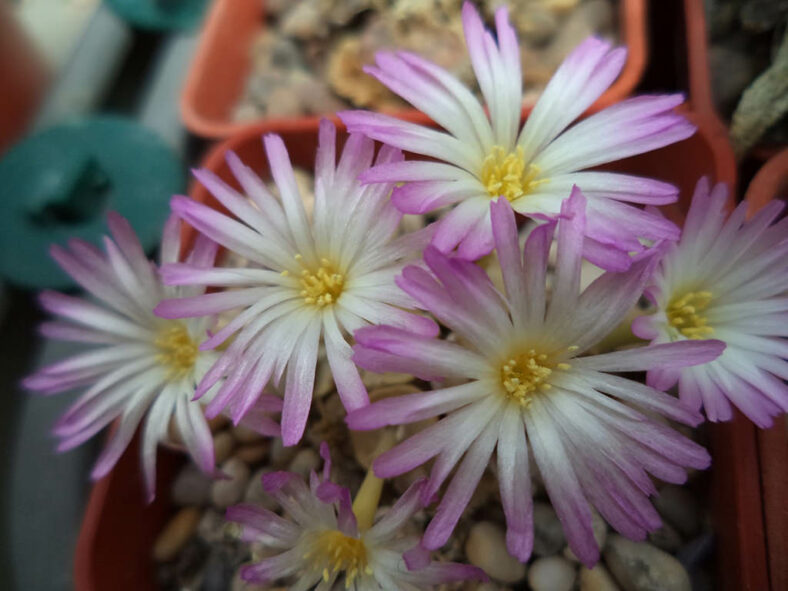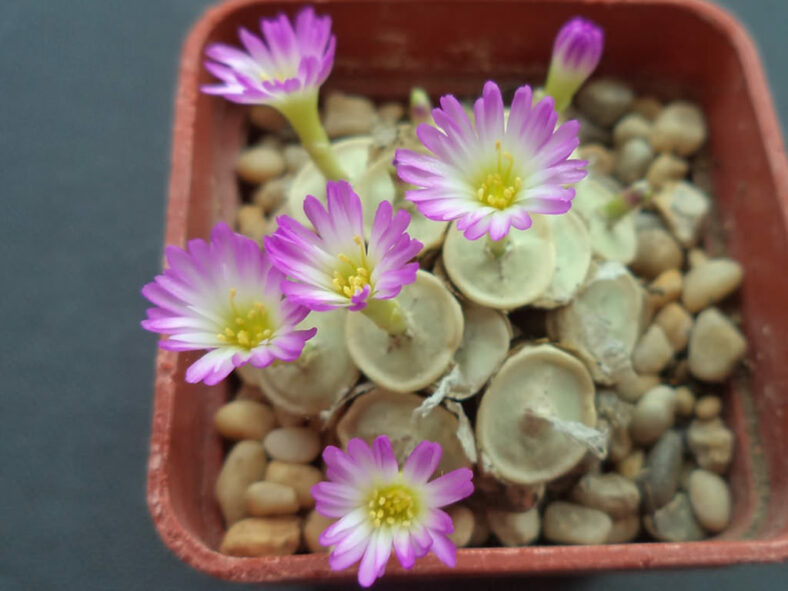Unlike most Conophitums, which typically flower in the fall, Conophytum chrisocruxum produces flowers in spring and early summer while the body is still covered by the previous year's dead skin.
Scientific Name
Conophytum chrisocruxum S.A.Hammer
Common Name(s)
Holycross Button
Scientific Classification
Family: Aizoaceae
Subfamily: Ruschioideae
Tribe: Ruschieae
Genus: Conophytum
Etymology
The specific epithet "chrisocruxum" (pronounced "kris-oh-KRUKS-um") is a compound combining the first name of Chris Barnhill, Steven Hammer's favorite photographer, with the Latin word for cross. It refers to the distinctive cross-shaped design found on the top surface of this species' bodies.
Origin
Conophytum chrisocruxum is native to South Africa. It grows on the hills southeast of Port Nolloth in the Northern Cape province, sandwiched between quartzite cliffs.
Description
Conophytum chrisocruxum is a dwarf succulent with inversely conical bodies that consist of two opposite, almost completely fused leaves. It forms dense clumps reaching up to 2 inches (5 cm) in diameter. Individual bodies can grow up to 0.7 inches (1.8 cm) tall and 04 inches (1 cm) in diameter. They are smooth and gray-green, with a distinctive fissure on the top surface that is crossed by a reddish or dark green line.
In spring and early summer, Conophytum chrisocruxum produces long-tubed flowers with pink or white petals. The flowers emerge from the central fissure and open during the day.

How to Grow and Care for Conophytum chrisocruxum
Light: This plant thrives in bright light but should be protected from intensive direct sunlight. To avoid sunburn, place it in an area where it can receive a few hours of full sun during the cooler parts of the day.
Soil: For optimum growth, Conophytum chrisocruxum requires porous soil that allows water to drain away quickly. You can use a commercial potting mix designed for succulents or make your own.
Temperature: High temperatures are not a problem for this plant, but it is not frost-hardy. It grows best in USDA Plant Hardiness Zones 10b to 11b, with average minimum winter temperatures ranging from 35 to 50 °F (1.7 to 10 °C).
Watering: Conophytum chrisocruxum requires little or no water during its dormancy. When it begins to grow again, it is safe to water it deeply. However, ensure that the soil dries out between waterings. If the leaves start to wrinkle during active growth, this may indicate that additional water is needed.
Fertilizing: This plant is a light feeder and does not need fertilizer if repotted every two years.
Repotting: The best time to repot this plant is at the beginning of the growing season. However, you can also repot it anytime during its active growth.
Propagation: Although it is usually propagated from seeds, Conophytum chrisocruxum can be easily propagated by division. Sow the seeds in the fall. The ideal time to divide the plant is either before it begins to break dormancy or after it has finished flowering.
Learn more at How to Grow and Care for Conophytum.
Toxicity of Conophytum chrisocruxum
Conophytum chrisocruxum is considered non-toxic, so growing around children and pets is safe.
Links
- Back to genus Conophytum
- Succupedia: Browse succulents by Scientific Name, Common Name, Genus, Family, USDA Hardiness Zone, Origin, or cacti by Genus
Photo Gallery
Click on a photo to see a larger version.


